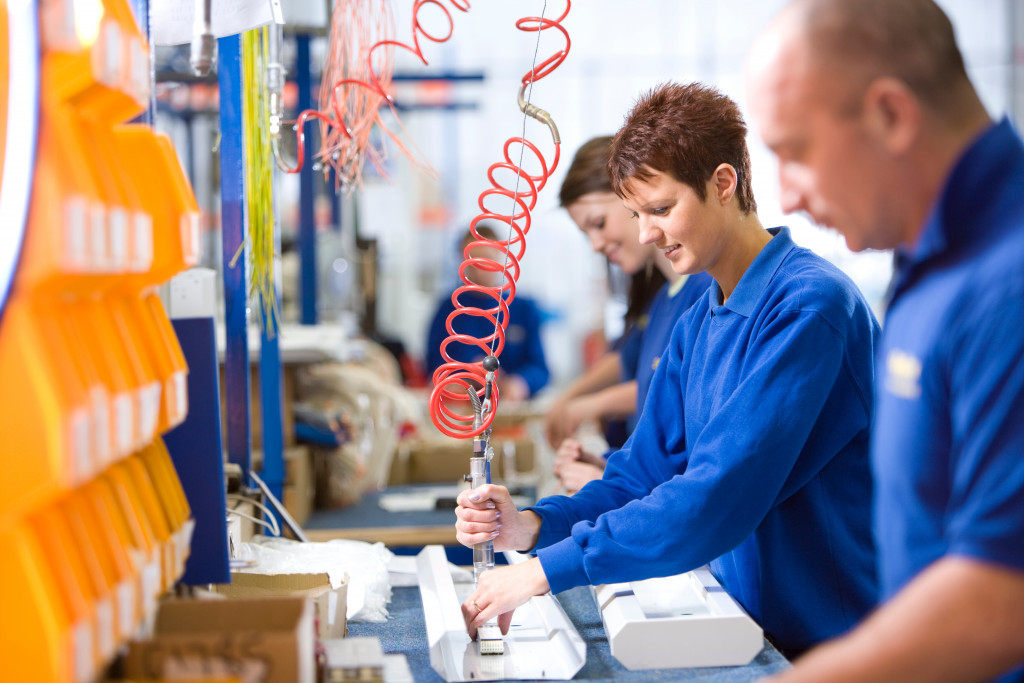The manufacturing industry is under constant pressure to increase productivity and efficiency while reducing costs. This is because the global marketplace is incredibly competitive, and manufacturers must find ways to stay ahead of the curve. One way they can do this is by automating their operations.
By automating their manufacturing processes, companies can enjoy several advantages. Automation can help to improve quality and consistency, increase production rates, reduce costs, and improve safety.
The Benefits of Automating Your Manufacturing Operations
If you own a manufacturing company, you might wonder if automation is the right choice for your business. The short answer is that, in most cases, it is. Automation can help to improve quality and consistency, increase production rates, reduce costs, and improve safety. Let’s take a closer look at each of these benefits in turn.
Improved Quality and Consistency
One of the biggest benefits of automated manufacturing is that it can help improve your products’ quality and consistency. When machines are handling the task of production, the likelihood of human error is minimized. This means that your products will be more consistent in quality and performance. Automation can also help to ensure that your products meet all relevant safety and quality standards before they leave your facility.
Increased Production Rates
Another advantage of automated manufacturing is that it can help to increase your production rates. This is because machines generally work faster than humans. In addition, automated machines often require less maintenance and downtime than human counterparts. This means you’ll be able to produce more products in a shorter period when you automate your manufacturing process.
Reduced Costs
In addition to increased production rates, automating your manufacturing process can also help to reduce your overall costs. This is because automated machines are generally more efficient than human workers. In addition, automated machines often require less maintenance and upkeep than human workers do. As a result, you’ll save on labor costs while reducing your maintenance expenses.
Automating your operations
Many manufacturing companies are looking to automate to stay competitive, but the process can be daunting. Here are 5 tips to help you get started on automating your manufacturing operation and achieving seamless processes.
Define Your Objectives
The first step is to define your objectives for automating your manufacturing process. What are your goals? What do you hope to achieve? Answering these questions will help you determine what type of automation solution is right for your company.
Consider the Entire Process

When considering which parts of your manufacturing process to automate, it’s essential to take a holistic view and consider the entire process from start to finish. Which steps in the process are most critical? Which ones are most time-consuming or labor-intensive? For example, did you know that you need electrical actuators to automate the opening and closing of doors in a cleanroom? It acts as an airlock, preventing contaminants from entering the room. Without it, you wouldn’t be able to maintain the cleanliness of your product.
Work with an Experienced Partner
When you’re ready to start automating, work with an experienced partner who can help you select the right solution and ensure a smooth implementation. A good partner will take the time to understand your specific needs and objectives and offer a tailored solution that meets all of your requirements. Keep in mind that automating your manufacturing process is a significant investment, so you want to be sure that you’re working with a partner who you can trust.
Test, Test, Test
Once you’ve implemented your automation solution, it’s important to test it thoroughly to ensure that it’s working correctly and as expected. Testing also allows you to identify any potential issues, so they can be addressed before going live. It’s a simple yet crucial step that should not be overlooked. Sadly, many organizations do overlook this step and end up regretting it later, costing them time and money.
Be Prepared for Change
Automating your manufacturing process will likely require some changes in procedures and processes. Be prepared for this by communicating with all stakeholders ahead of time and training employees on the new system. In business, change is inevitable. But with proper planning and preparation, you can ensure a smooth transition to your new automated manufacturing operation. Don’t be afraid to ask for help along the way – that’s what your partner is there for.
The bottom line
Automating your manufacturing operation can seem like a daunting task, but it doesn’t have to be. Be proactive in implementing automation solutions to stay competitive and keep your operation running smoothly. Remember, your competitors are likely already automating their manufacturing processes– don’t fall behind.
